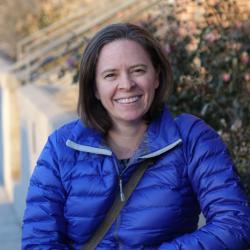Drifting North Polar Planetarium is a collection of lessons, activities, one of two planetarium films and an optional field trip to Fiske or your local planetarium to view the film. These lessons can be used in the classroom before and after watching the film.
View all the MOSAiC Expedition Drifting North resources
Classroom Lessons from the above unit:
Introduction to the MOSAiC Expedition - Learn about the conditions in the Arctic and the scientists who study them through slides, audio podcast, and a worksheet.
- Driving Question: What is the Arctic? Who studies the Arctic? Why should we care about the Arctic?
- NGSS: Science is a Way of Knowing, Science is a Human Endeavor
- 60 minutes - Middle School
Letters to the Arctic - The film and multimedia project Letters To The Arctic asked scientists to share their narratives and get personal about their relationship with the ice. Explore these letters with your students and prompt them to share their narrative about our ever-changing environment.
- Driving Question: How do scientists feel about the places they study?
- NGSS: Science is a Way of Knowing, Science is a Human Endeavor
- 60 minutes - Middle School
Seasons and Light in the Arctic - This activity explores why we have seasons and changing daylight throughout the year by graphing different daylight hours around the world. Students will have the opportunity to explore why the Arctic’s seasons and daylight are different from other places in the world.
- Driving Question: How do we understand the Arctic light and seasons?
- 60 minutes - Middle School
Sea Ice, The Character (lab) - Compare and contrast the different structures of freshwater ice and seawater ice in this hands-on lab. Learn about what makes sea ice so unique in the Arctic.
- Driving Question: How do we understand the Arctic light and seasons?
- 60 minutes - Middle School/ High School **30 min active prep; 2-4 hrs passive prep (freezing water)

